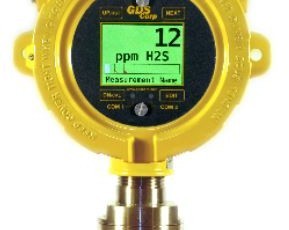Whether it’s a chemical processing plant, wastewater treatment facility, or offshore drilling platform, confined spaces are found in virtually any industrial setting. Considered some of the most dangerous areas where workers spend much of their time on a daily basis, these places always run the risk of having unsafe oxygen levels, which can lead to fires or explosions if left undetected. Because of this, industrial facilities must continually monitor these areas using wireless gas detection systems to ensure oxygen levels stay within established OSHA guidelines. To gain a better understanding of the role wireless gas detectors play in keeping oxygen levels safe, here are some important facts to consider.
Oxygen Atmospheres
Based on OSHA guidelines, a confined space is considered to have safe oxygen levels if readings are between 20.8-21 percent, while a space with readings of less than 19.5 percent are considered to be oxygen deficient. To be oxygen deficient, such factors as rusting metals, coatings, or paints may be present. For those spaces with oxygen levels of 22 percent or more, the area is considered to be oxygen enriched due to such factors as chemical reactions or leaking oxygen hoses or torches. In these situations, the threat of fire or explosion can be quite high, thus prompting more and more companies to invest in sophisticated wireless gas detection technology.
Testing Prior to Entry
Based on OSHA regulations, certain types of confined spaces must be tested prior to entry. These include spaces that have been sealed, non-ventilated spaces that have been freshly painted, spaces that contain flammable liquids or gases, or spaces that contain liquids, gases, or solids that are toxic, corrosive, or irritant. Upon testing being completed, any confined spaces found to be oxygen deficient must be labeled as “Not Safe for Workers,” while those that are oxygen enriched are labeled “Not Safe for Workers” as well as “Not Safe for Hot Work.”
Shutdown Sequencing
For companies that have installed wireless gas monitors in their facilities, one of the biggest advantages is having the capability of shutdown sequencing. With this technology, wireless gas sensors can detect dangerous levels of oxygen and begin shutdown sequencing procedures. Happening most often when gas mixtures vary and become out of balance with one another, individual system components can be alerted to potential problems, enabling each part of the system to initiate shutdown sequencing. Along with this feature, these systems also need less calibration, since they are designed to regulate air on-site. By doing so, employees and equipment can be better protected from potential disaster.
Learn More About Safe Oxygen Levels
While it can be difficult at times to keep up with the latest OSHA rules and regulations, it’s imperative to do so when it comes to oxygen levels regarding confined spaces. If you need to gain a greater understanding of this topic and the types of monitoring systems that can guard against serious issues occurring, contact Global Detection Systems and speak with an Applications Engineer who has specialized knowledge of these problems.

